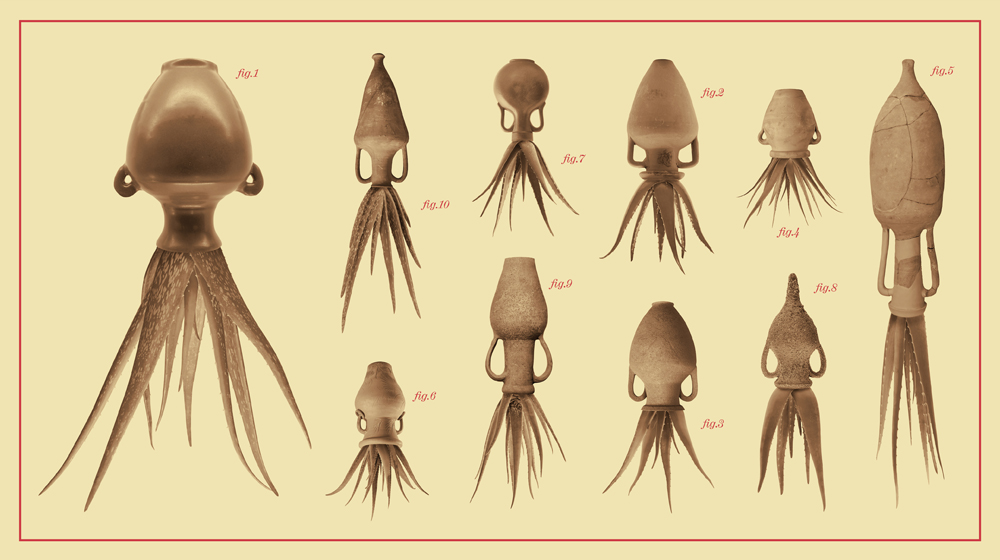Is it possible to imagine other earthly stories? Can we conceive of other ways of living among different species? This exhibition explores these issues with the help of a selection of works of art and popular science. It proposes a change of mentality and sensitivity that questions the supremacy of the human species, opting for a view of the world understood as an ecosystem where all the planet’s species coexist.
The starting point for the exhibition “Science Friction. Life among Companion Species” is the scientific evidence that all terrestrial species are linked by symbiotic, interdependent relationships. In nature there are no autonomous or independent organisms; we are all part of mutually integrated ecosystems. Species make up a network of collaborations, mutations and exchanges in which we coexist as companions.
This paradigm shift implies that the human species is not exceptional or superior. Ultimately, symbiosis questions human supremacy: the idea that the whole of nature and all living beings are at the service of our well-being.
To narrate this change in perspective, the exhibition draws on the work of two key figures in contemporary scientific culture: Donna Haraway and Lynn Margulis. The two have in common the importance they accord to symbiosis and collaboration between species, and their interest in communication and scientific narrative.
Artists, thinkers, scientists and activists
The transition from anthropocentrism (a human-centred world view) to biocentrism (the human as part of an ecosystem) runs through the exhibition. The visitor will find a selection of artworks in different media, such as immersive audiovisual and sound installations, virtual reality, painting, drawing and avant-garde cinema, as well as items of scientific dissemination.
The exhibition curator, Maria Ptqk, has brought together a series of creators, thinkers and scientists from around the world who explore interspecies relationships and persuade us of the urgency of inventing other science f(r)ictions and fabular and speculative stories that expand the imaginable and help us place ourselves in the emerging interspecies paradigm.
The evolution of the rights of nature
The exhibition ends with Time-Life-Time by Jaime Serra (2021), an artistic installation produced specially for the show and dedicated to the Rights of Nature movement. According to these rights, animal and plant species, along with rivers, mountains, valleys and ecosystems, are to be protected for their intrinsic value, regardless of their usefulness to humans.
This installation, at once an epilogue and an independent part of the exhibition, is the author’s own highly personal review of the present-day trend in environmentalism in the form of some 30 pieces in various media and graphic supports (collage, photography and various objects). It is first of all a historical journey around the milestones that have marked the evolution of the rights of nature since the mid-20th century. Then, ironically and thought-provokingly, the author brings these milestones into dialogue with elements in the exhibition itself and others from popular culture and the media, tracing a journey of paradoxes and unexpected encounters.
The exhibition that will run at the CCCB completes a broader cycle of research started in 2017 with an exhibition produced by the virtual space of the Jeu de Paume Visual Arts Centre in Paris.
The exhibition has had the collaboration and scientific advice of Ricard Guerrero, Professor of Microbiology at the University of Barcelona, and Rubén Duro Pérez, scientific communicator.
In the framework of the City and Science Biennial 2021.
Curator: Maria Ptqk
Artists: Cleve Backster, Louis Bec, Paula Bruna, Ernesto Casero, Vinciane Despret, David Domingo (aka Stanley Sunday), Shoshanah Dubiner, Rubén Duro Pérez, John Feldman, Walon Green, Gustafsson & Haapoja, Donna Haraway, Marley Jarvis, Laurel Hiebert and Kira Treibergs, Dominique Koch, Christie Lyons, Mary Maggic, Petra Maitz, Marshmallow Laser Feast (MLF), Stefano Mancuso, Lynn Margulis, Joan Martínez Alier, Terence McKenna, Museo del Hongo, Dimas Paredes, Richard Pell, Mercè Piqueras, Max Reichmann, Quimera Rosa, Toni Serra (Abu Ali), Jaime Serra Palou, Maria Sibylla Merian, Saša Spačal, Susana Talayero, Paulo Tavares, Helen Torres, Diana Toucedo, Pinar Yoldas

Share your thoughts and join the technology debate!
Be the first to comment